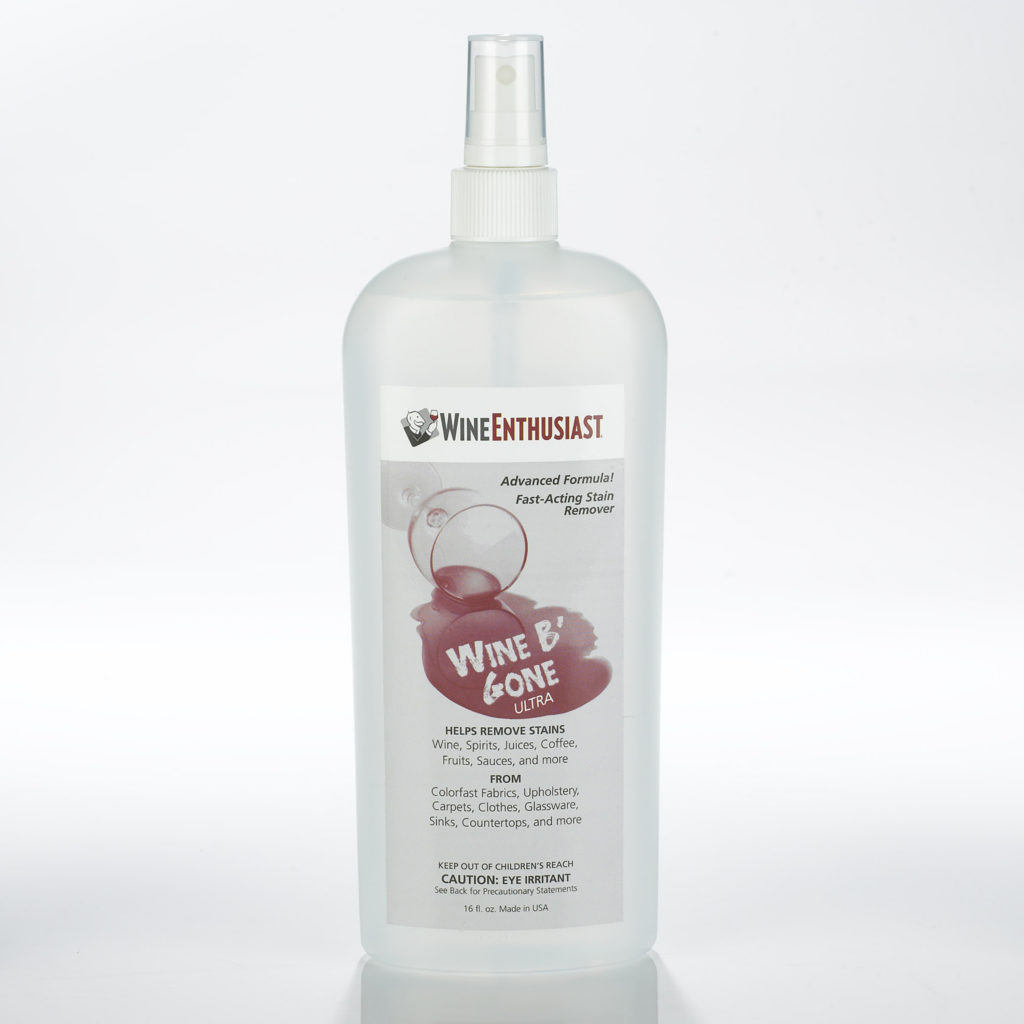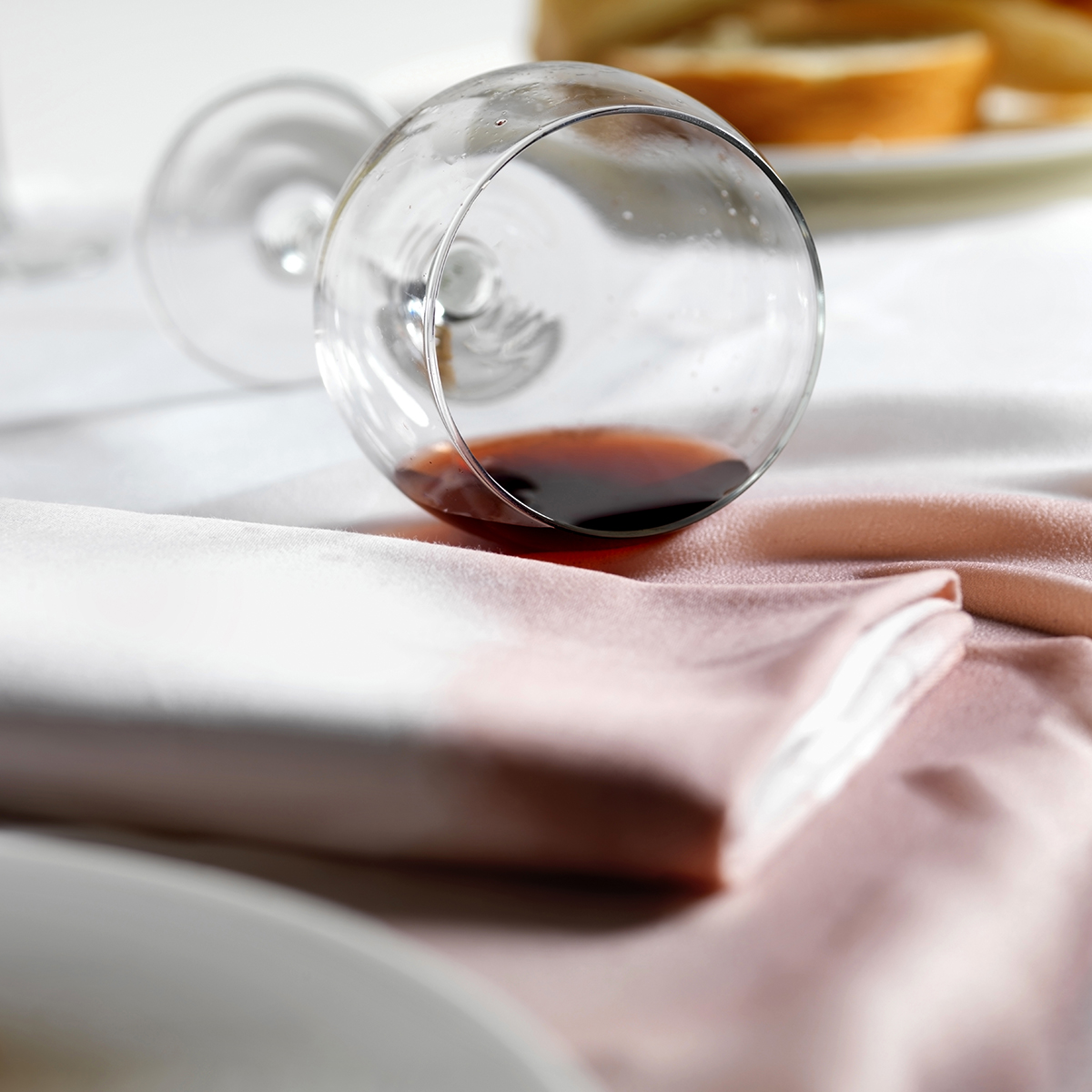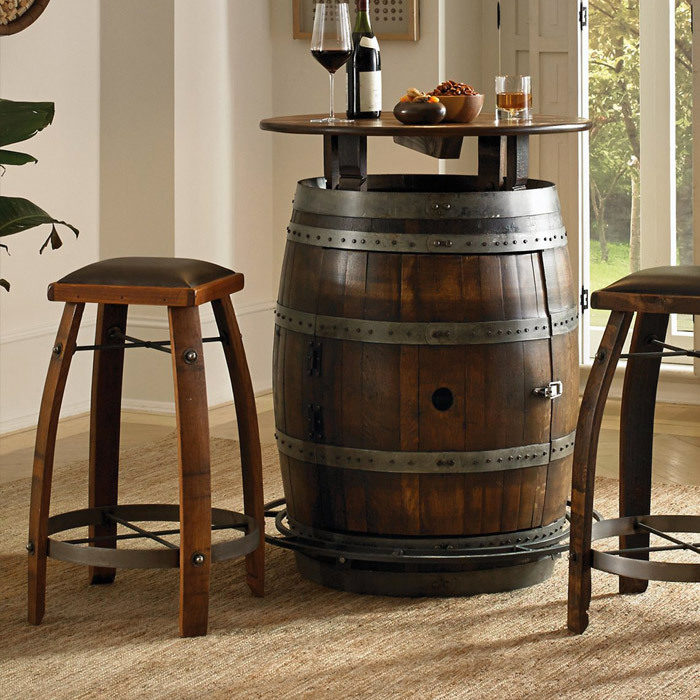The dreaded red wine spill. It happens to the best of us—whether it lands on the carpet, the coverlet, or the crisp, white shirt you love. It splashed, but is it there to stay? The experts say not necessarily, not if you’re armed with a little know-how and you act fast. How do you keep an unfortunate spill from turning into a regrettable stain? We asked the pros for their expertise and rounded up the best practices to remove red wine stains from clothes, carpet and upholstery. So, before your next pour, read on.
What’s In Red Wine That Makes It Stain, Anyway?
Grape-based red wine contains strong pigments called “chromogens” and tannins, bitter and astringent compounds that both contribute to wine’s dye-like properties. It’s these ingredients that make red wine prone to staining, explains Wayne Edelman, CEO of Meurice Garment Care, a dry-cleaning service in New York City. “It’s why red wine stains generally will not come right out in the washing machine and need to be pretreated,” says Edelman.
When It Comes to Red Wine Stain Removal, Threads Count
Spilling red wine on your carpet or a favorite dress is disheartening “but it shouldn’t be the end of the world,” according to LA-based textile expert Deborah Young. Young, also known as The Textile Expert, is an author, instructor, and consultant who knows fibers inside and out. She believes it helps to understand some general stain removal principles, so you know what you’re up against. “There are two things you need to know,” says Young. “First, is the nature of the stain. And second, the fiber content of the fabric in question.” There are three kinds of stains—oily (butter, salad dressing), organic (grass, blood) and inorganic (ink, markers)—with organic stains being by far the easiest to remove. The good news is that all red wine stains are organic. (In the sense that you find wine’s ingredients in nature.)
Next, consider where the wine has landed: Was it on your crisp, cotton shirt or linen tablecloth? Or your Teflon-reinforced carpet? Cotton and linen (and silk and wool) are natural fibers, so they’re naturally absorbent. They’re as quick to embrace a red wine stain as they are to release it. On the other hand, most carpet and many upholstery fabrics are synthetic (think: polyester, nylon, and acrylic) and not absorbent.
Don’t Panic! The First Step in Removing Red Wine Stains Is Act Fast
If the cleaning experts agree on one thing, it’s this: red wine stains are not hard to treat if you act quickly. It makes sense. As soon as a spill hits your sofa or slacks, it starts to spread—into the fibers and outward, so the longer you wait to act, the more the ground the stain will cover and the more time it has to set.
Immediately blot the area—ideally with a clean, white cloth, but a paper towel will do—to absorb as much wine as possible. Whatever you do, resist the urge to scrub because it may embed the wine deeper into the fibers of your fabric. Work from the outside of the stain, inward and be patient, because the more wine you soak up, the less discoloration you have to deal with in step two.
Use a Trusted Red Wine Stain Remover Product

Many cleaning pros favor a fast-acting product that’s easy to use and has an excellent track record — like Wine Enthusiast’s Wine B’Gone Ultra Stain Remover. In fact, the Good Housekeeping Institute named it one of the top three wine stain removers. The spray was specially formulated to effectively treat wine stains quickly on everything from clothing to countertops. It also works well on other stains like coffee, tea, and fruit. It contains safe solvents and no phosphorous, peroxide, or chlorine bleach, so it won’t adversely affect colorfast washable fabrics.
Try Natural Red Wine Stain Removers
There are other red wine stain removal products hiding in plain sight—in your pantry or medicine cabinet. Keep in mind there are as many homegrown solutions out there as there are types of wine bottle openers, and they all come with one expert endorsement or another.
Sodium Percarbonate
Young’s go-to remover is sodium percarbonate or SPC (the active ingredient in OxiClean powder). “Make a paste with water and dab at the stain, sparingly, with an eyedropper or a Q-tip, until the color fades away,” she suggests. The makers of OxiClean recommend rinsing and blotting with a white towel until the stain is gone rather than letting the product dry.
Denatured Alcohol and Vinegar
Denatured alcohol can be effective too, says Young. Just rinse the stained area thoroughly, then dab with a little alcohol and blot. And finally, she swears by white vinegar for any residual color that won’t budge after the stain is mostly gone. Her heat warning: “Never put anything in the dryer until you’re satisfied with the removal result, because heat will set a stain and then it’s all over.”
Salt
For synthetic carpet, the pros at Lowes/STAINMASTER® Carpet recommend starting with salt. “Cover the stain with salt and leave it overnight. In the morning, scoop away as much salt as you can, then vacuum up the rest,” says Lowes’s Gary McCoy. If salt doesn’t do it, he recommends a detergent solution: a quarter teaspoon of mild liquid dish soap with one cup of warm water. Apply with a clean cloth, working outside the stain to its center. Let it soak in for at least five minutes, then blot dry and rinse with cool water.
Club Soda
For everyday stains, Edelman is loyal to the old standby, club soda. But for stubborn stains that just won’t break down and go away (especially on upholstery) he recommends using a hand-held upholstery cleaning machine.
At the end of the day (or the party), the finishes on some textiles may simply resist your best efforts. You may need to bring in a pro—or take something to the dry cleaners. “The fact is that dry-cleaning solvents outperform any washing products you can use at home,” Young says. “However, bring all the information your cleaner will require.” So you’ll want to say something like, “Last Friday around 8 p.m., I spilled a glass of merlot down the front of this dress, and I did this, this, and that to try to clean it.” Young states: “They’ll need the provenance to do the job correctly.”



